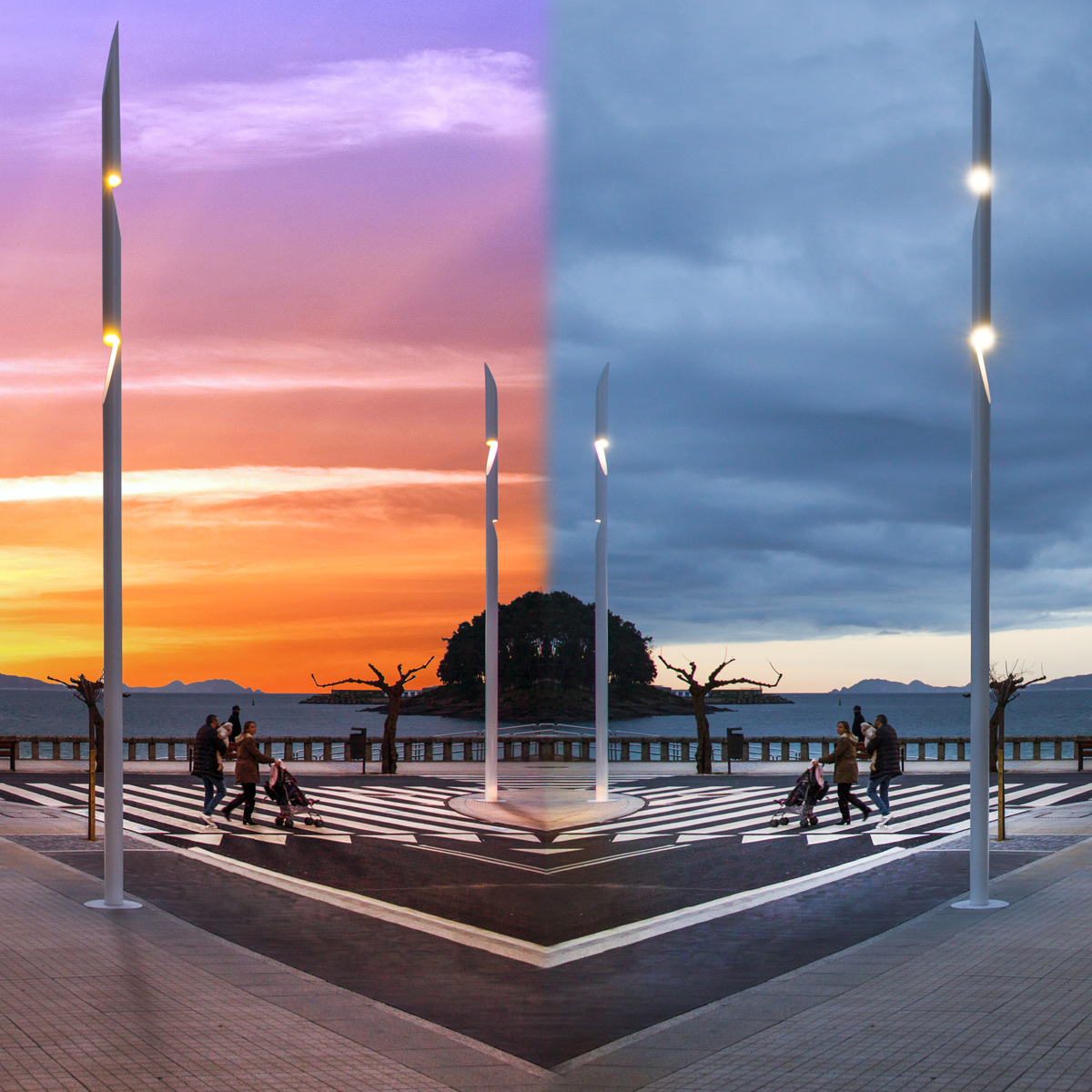Cities never really sleep, but they do rest. They have life and movement at any time of the day and night. They pass the hours in step with the chores of the humans who inhabit them. And we, throughout days and months, vary the vigor we face our activities with, modify routines, and therefore, change our needs.
Lighting plays a fundamental role in accompanying people in their vital harmony. Our biological clock determines the circadian rhythms and has to do with the changes that an individual registers in his daily cycle in physical, behavioral or mental aspects. It is directly related to the color and intensity of light: light has an impact on our well-being.
The light intensity that we need to perform different tasks throughout the day, even the one that predisposes us to face them with a greater attitude, is proportional to the degree of activity. Nowadays, luminous flux control systems are capable of being modified according to the needs of the moment, thus allowing an efficient use of lighting.
Intelligent and efficient lighting
The new public lighting designs take this into account and seek not only to save energy consumption, but also to provide intelligent lighting that accompanies the inhabitants of cities in their daily traffic.
Every space and every time of the night has different lighting needs. SETGA, an international Galician company based in Pontevedra, has developed a technology called Circadionic, which allows the regulation of light intensity and color.
Concepts such as integrative enlightenment are gaining more and more strength. In this new idea of lighting, the human being is the epicenter. It has been scientifically proven that color temperature and light levels influence people’s mood, performance and health. That is why the evolution of the lighting design of our cities has derived to take into account these issues so closely linked to the Smart City concept.

We are in an era with a new culture of light in which a calmer, more comfortable and efficient lighting is valued. That allows us to enjoy every moment of the night in all its extension. Public spaces must be illuminated intelligently.
Beyond the link between health and lighting, technologies such as Circadionic help to save energy consumption and care for the planet. The idea that power efficiency is simply a matter of using energy-saving lamps has long since been discarded. Indeed, energy efficiency has to do with reducing energy costs, and more efficient technologies, such as LEDs, have a lot to contribute to this.
But the concept of efficiency goes beyond that. Nowadays, it is not enough to simply place streetlights every few meters that expand their light jet to a space of six square meters without further criteria. This is a concept of the past. Evolution has led us to the fact that in our time, being able to regulate the intensity and color temperature of the lighting that is applied to a space at different times of the day and night, is an intelligent use of resources.
Transition to night gradually and illuminate as necessary
In our country it gets dark in winter around six o’clock in the evening, but at that time the social, commercial and leisure activity in the public space is still very high. People go to different places when they leave work or their places of study, go shopping… At that time, it would be very important that the color temperature of the daylight that is disappearing, with color temperatures 5000-4000ºK, coincides with that of the public lighting that has just been switched on, which is called white light. This would keep us active due to the blue component of the light.
But as the day progresses and we return home, the color temperature should provide a calmer environment with warm light, between 3,000 and 2,200 Kelvin. This transition to night can be graduated through technologies such as Circadionic, thus respecting the human circadian rhythm.
It matters how we illuminate. Where we direct that light beam, how we define it in terms of intensity and what type of light it emits with respect to parameters such as color temperature. Gone are obsolete conceptions of jets of light shining everywhere.
Outdoor luminaires should illuminate the specific space they are intended to illuminate and no other. Too much light is considered an unnecessary waste of energy and can even lead to light pollution. Avoiding, for example, the so-called intrusive light is one of the requests that are emphasized in the new urban lighting designs. In this sense, the flow of light can and must be controlled by illuminating the plans foreseen in the project and not others. The lighting design of a city is a decision that will affect the daily life of its residents for years, so it must be studied in depth and in the hands of true professionals.
As much as we live in a globalized world, each city has its own personality that is also present in issues such as the use of spaces and even in the urban furniture.
In that sense, streetlights, bollards and other lighting elements of public spaces keep alive the personality and idiosyncrasy of a city. Therefore, the lighting design of a city is not the same as that of another. What is common to all is the importance of the quality and dynamism of light in our rhythm of life, in knowing how to regulate it when the city is active and also when it is resting.



